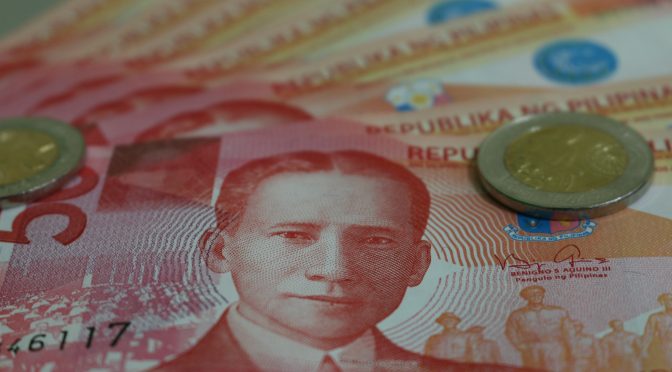Philippine Peso Steady Against the Dollar While Other ASEAN Currencies Fall Last Week
-

Last week saw the rise of the USD against ASEAN currencies such as the MYR (Malaysian Ringgit), SGD (Singapore Dollar), and the IDR (Indian Rupiah). Surprisingly, the PHP (Philippine Peso) was able to hold its stance while slowly rising against its USD counterpart.
The Outlier in the Story: The Philippine Peso
The deviation from the other ASEAN currencies in highlight is the PHP. This is mainly due to the capital flows from the country. The end of March saw a slow down of both foreign inflows and outflows of capital of the Philippine Stock Exchange.
From an investor’s point of view, this may be viewed as a low exposure situation making the PHP a risk-off type of investment.
Philippine Fiscal Policy Also Contributes to Economical Support
Another reason as to why the PHP is still steady against the USD is because of its fiscal policy acting as an economic stimulus in the short term. This fiscal package is to aid in upkeeping the economy while the whole island of Luzon is under an Enhanced Community Quarantine (ECQ) until the middle of April (or possibly until the end of April).
According to the governor of the Bangko Sentral ng Pilipinas (BSP) Benjamin Diokno, rates were slashed by 75 points this year although there is a lot that can still be done if ever more support for the economy is needed.
On the other side of the coin, US data has been consistently underperforming against the expectations of economists. This was especially apparent when data last week revealed an increase in unemployment rate to 4.4% from previously 3.5%. Non-Farm Employment Change also dropped from previously 275k to -701k.
What’s In Store for the ASEAN Currencies?
Moving forward, there is a possibility of the ASEAN markets getting back on track because China– an important trading partner, has started normalizing business activity.
The releasing of the ASEAN’s foreign exchange rates reserves this week will also serve as an indicator as to how much stress is placed on the ASEAN Central Banks . Philippine trade data will also be released this week which may affect the currency.
So far, Philippine export data is shown to have remained strong with a 9.7% growth in January. However, exports are expected to grow only by 3.2% in 2020 while imports are expected to rise by 6.7%. The data will give clarity on the movement of the PHP relative to the USD.
Risk Disclaimer:
Information on this page are solely for educational purposes only and is not in any way a recommendation to buy or sell certain assets. You should do your own thorough research before investing in any type of asset. Learn to Trade does not fully guarantee that this information is free from errors or misstatements. It also does not guarantee that the information is completely timely. Investing in the Foreign Exchange Market involves a great deal of risk which may result in the loss of a portion or your full investment. All risks, losses and costs associated with investing, including total loss of principal and emotional distress, are your responsibility.









































By bsuper
| No Comments